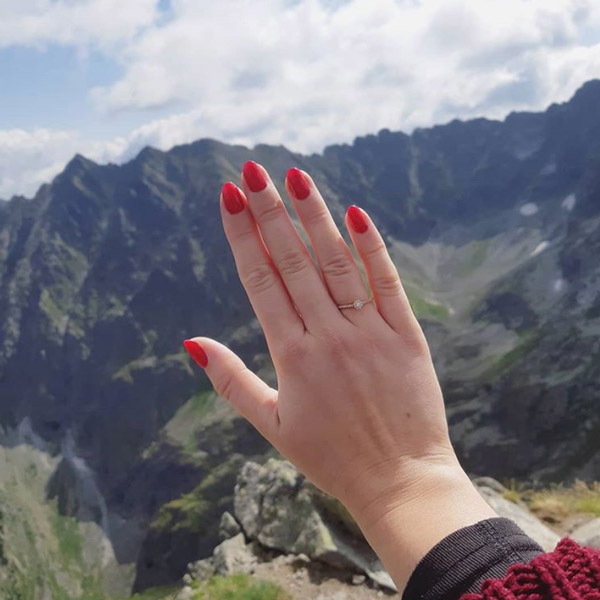
Last week’s article about Tatler’s bridal social media etiquette had me scrolling through engagement ring photos on Instagram, and, as happens, I began to notice some trends.
I spent quite some time on the #isaidyes feed—precisely the hashtag Tatler advises its readers not to use—to get a look at whether those users were, in fact, posting up-close shots of their engagement rings. Many of them were, and many of those rings (though certainly not all) were quite petite.
It’s worth noting that this finding didn’t appear to be the case when I looked at hashtags such as #engaged and #justengaged—there, larger diamonds prevailed, probably in the 1 ct.-plus range (many of those happened to be pear shape, so perhaps there’s another trend to discuss another day).
The prevalence of these smaller pieces—many looking like they are one-half carat or so, some even simple gold bands—got me thinking about the future of engagement rings and how we view certain things as status symbols.
https://www.instagram.com/p/B05_48iAItU/
Via: @beatricej
For a lot of consumers, less has become more in myriad ways. Less complicated, organic food. Less clutter, more open space. Less collecting, more conscious buying. Less social media, more real-life experience.
It’s vital, in this instance, that we do not confuse less with cheaper, as this is almost never the case. People pay more money for cleaner foods and home supplies; a minimalist home is often painstakingly made that way through glossy, expensive furniture; and each of those conscious purchases usually amounts to more due to its quality and one’s desire to buy from local or independent artisans. This lifestyle is not accessible to all consumers, as uncluttered and simple as it may appear.
https://www.instagram.com/p/B01xf1gAsXY/
Via: @laripedrosaa
So where does that leave engagement rings in the era of less? Studies have shown that millennials are prioritizing experiences over items (that, and paying college debts), so fewer are buying cars, homes, and so on.
https://www.instagram.com/p/B0vH2M7gSCX/
Via: @silxa.o
Does this apply to what may be the most important jewelry purchase of someone’s life, then? There used to be an unofficial rule of thumb for engagement ring shopping: Spend two months’ salary on a diamond. Today, that rule feels gauche. If today’s shoppers are prioritizing experiences over things, one can only guess that they’re more likely to be less concerned with the size of the diamond on their finger than they are with the fact that they’re beginning a life with the person they love—but I say this from my inner-city millennial bubble. I understand that this is certainly not the rule everywhere and maybe isn’t here, either. These findings could be sheer coincidence, “trending” for a variation of reasons from budget restrictions to disinterest in jewelry to a profession that makes wearing a larger ring impossible, etc.
https://www.instagram.com/p/B0-vgBYnlWl/
Via: @brunacapistrano
Still, the rise of the alternative engagement ring says something about how current shoppers are planning their proposals. If I were to make a prediction, however niche, I would imagine that instead of onlookers asking “How many carats?” about someone’s engagement ring, they may instead resort to questions like, “Who made it?” and “Is it conflict-free?” While multicarat diamonds are absolutely, positively still a major demand by brides-to-be, I wonder if the days of going into debt to show off a big look are becoming few and far between.
What have engagement ring purchases been looking like in your store? Please, email me if you have any feedback on whether smaller diamonds have been popular for you.
(Top image via: @rudaan)
Follow JCK on Instagram: @jckmagazineFollow JCK on Twitter: @jckmagazine
Follow JCK on Facebook: @jckmagazine